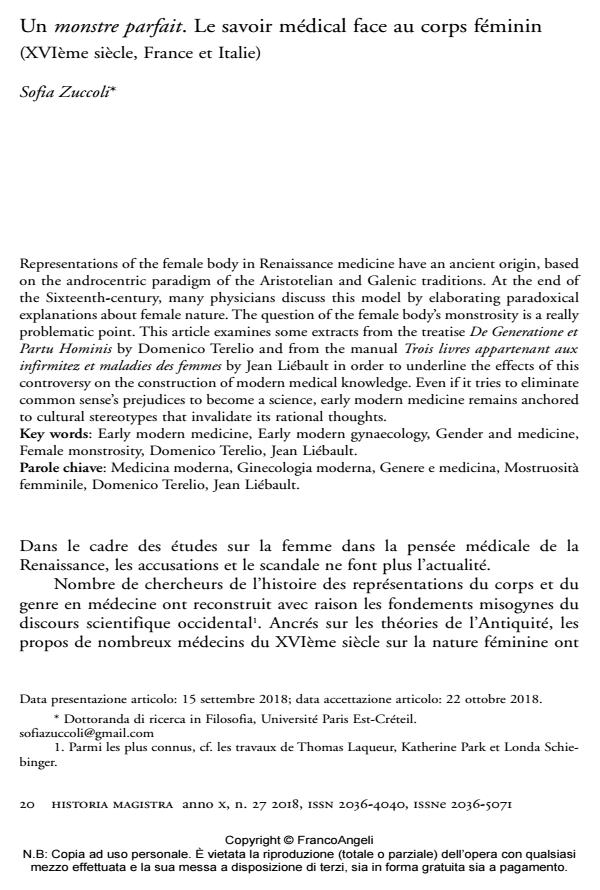Un monstre parfait. Le savoir médical face au corps féminin (XVIème siècle, France et Italie)
Titolo Rivista HISTORIA MAGISTRA
Autori/Curatori Sofia Zuccoli
Anno di pubblicazione 2018 Fascicolo 2018/27
Lingua Italiano Numero pagine 16 P. 20-35 Dimensione file 108 KB
DOI 10.3280/HM2018-027003
Il DOI è il codice a barre della proprietà intellettuale: per saperne di più
clicca qui
Qui sotto puoi vedere in anteprima la prima pagina di questo articolo.
Se questo articolo ti interessa, lo puoi acquistare (e scaricare in formato pdf) seguendo le facili indicazioni per acquistare il download credit. Acquista Download Credits per scaricare questo Articolo in formato PDF

FrancoAngeli è membro della Publishers International Linking Association, Inc (PILA)associazione indipendente e non profit per facilitare (attraverso i servizi tecnologici implementati da CrossRef.org) l’accesso degli studiosi ai contenuti digitali nelle pubblicazioni professionali e scientifiche
Representations of the female body in Renaissance medicine have an ancient origin, based on the androcentric paradigm of the Aristotelian and Galenic traditions. At the end of the Sixteenth-century, many physicians discuss this model by elaborating paradoxical explanations about female nature. The question of the female body’s monstrosity is a really problematic point. This article examines some extracts from the treatise De Generatione et Partu Hominis by Domenico Terelio and from the manual Trois livres appartenant aux infirmitez et maladies des femmes by Jean Liébault in order to underline the effects of this controversy on the construction of modern medical knowledge. Even if it tries to eliminate common sense’s prejudices to become a science, early modern medicine remains anchored to cultural stereotypes that invalidate its rational thoughts.
Parole chiave:Medicina moderna, Ginecologia moderna, Genere e medicina, Mostruosità femminile, Domenico Terelio, Jean Liébault.
- « In mulieribus […] memoria felicior ». Mémoire et différence des sexes selon les médecins modernes (xvie et xviie siècles) Sofia Zuccoli, in Cahiers François Viète /2024 pp.15
DOI: 10.4000/12ju9
Sofia Zuccoli, Un monstre parfait. Le savoir médical face au corps féminin (XVIème siècle, France et Italie) in "HISTORIA MAGISTRA" 27/2018, pp 20-35, DOI: 10.3280/HM2018-027003